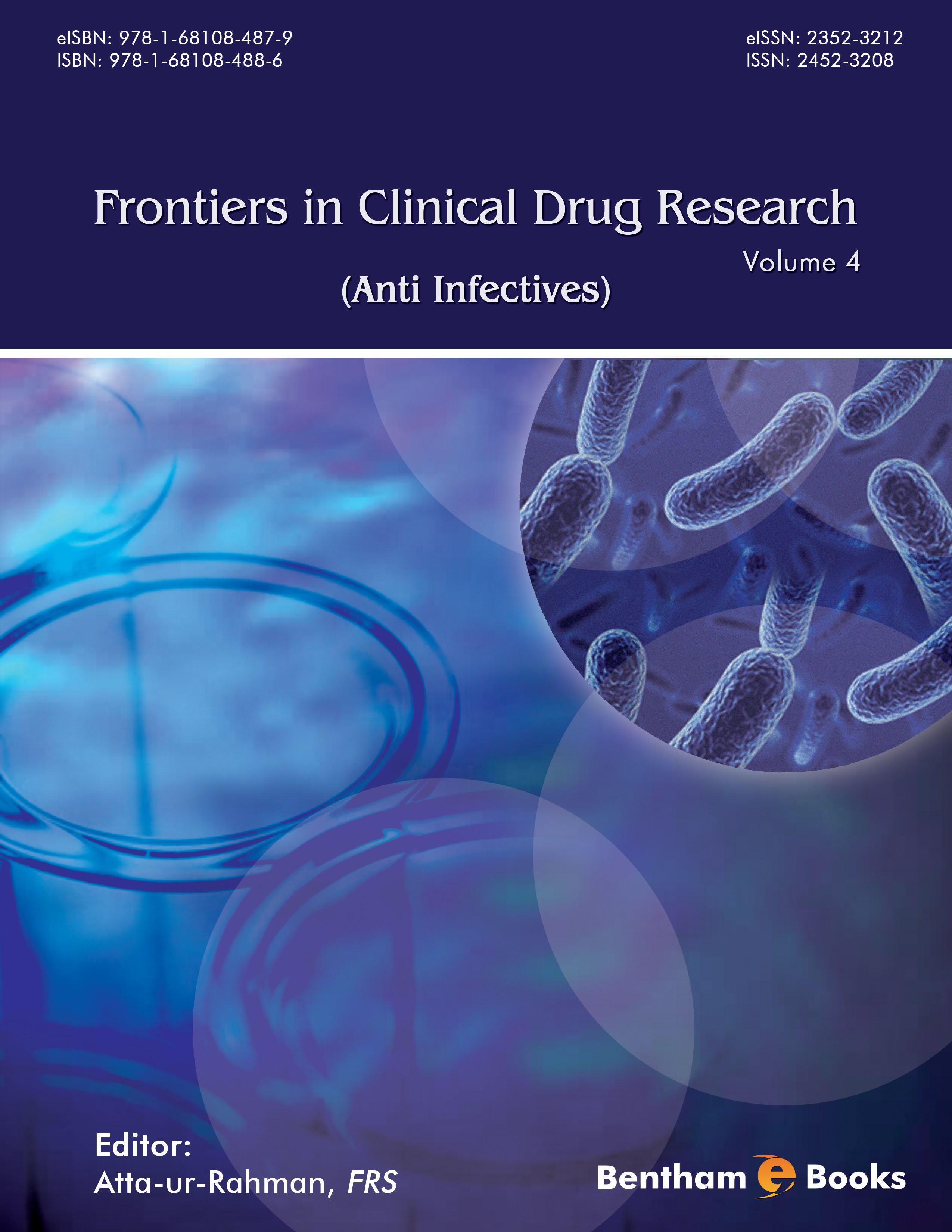The New Role of Steroids in Viral Infections

- Authors: Gabriel F. Gola1, Andrea C. Bruttomesso2, Andrea A. Barquero3, Javier A. Ramirez4
-
View Affiliations Hide Affiliations1 Universidad de Buenos Aires, Facultad de Ciencias Exactas y Naturales, Departamento de Química Orgánica, Buenos Aires, Argentina 2 Universidad de Buenos Aires, Facultad de Ciencias Exactas y Naturales, Departamento de Química Orgánica, Buenos Aires, Argentina 3 Universidad de Buenos Aires, Facultad de Ciencias Exactas y Naturales, Departamento de Química Biológica, Buenos Aires, Argentina 4 CONICET – Universidad de Buenos Aires, Unidad de Microanálisis y Métodos Físicos Aplicados a Química Orgánica (UMYMFOR), Buenos Aires, Argentina
- Source: Frontiers in Clinical Drug Research - Anti Infectives: Volume 4 , pp 93-141
- Publication Date: November 2017
- Language: English
The New Role of Steroids in Viral Infections, Page 1 of 1
< Previous page | Next page > /docserver/preview/fulltext/9781681084879/chapter-4-1.gif
Throughout history, viral diseases have been a serious threat that has constantly jeopardized the global public health. Although great success has been achieved in developing effective vaccines and antiviral drugs to combating them, new viral pathogens are emerging and the old ones evolve to evade current therapeutic options. Upon encountering a pathogenic virus, the host senses the invasion and triggers complex innate and adaptive immune responses to cope with the infection. Although pro-inflammatory responses are critical for the early control of viral replication, excessive inflammation also causes severe injuries to the tissues, thereby contributing to developing viral immunopathologies. Thus, glucocorticoids have been used due to their potential role in controlling the inflammatory response, but, unfortunately, corticosteroid administration has been shown to have a deleterious effect in various viral infections. Therefore, the clinical outcome of the use of steroids in the context of viral diseases is still controversial. Nevertheless, in the last decades, several natural and synthetic steroids have been reported as antiviral agents. Recent findings have demonstrated multiple physiological roles played by steroids during the course of different viral infections. These results encourage the assessment of novel steroids as antiviral and immunomodulatory entities. In this Chapter, we review the most recent advances on this field, focusing on the opportunities that the understanding of the interplay between viral infections and the steroids of the host might provide for the development of new therapies.
-
From This Site
/content/books/9781681084879.chapter-4dcterms_subject,pub_keyword-contentType:Journal -contentType:Figure -contentType:Table -contentType:SupplementaryData105

